Scientific Facts
| Common Name: | Marsh rabbit, marsh hares |
| Scientific Name: | Sylvilagus palustris |
| Life Span: | 4 years in the wild |
| Size (Adult): | Small to medium |
| Weight (Adult) | 1,200 to 2,200 grams |
| Habitat: | Marsh and freshwater marshes |
| Body Shape: | Compact |
| Country of Origin: | Florida, USA |
Physical Description
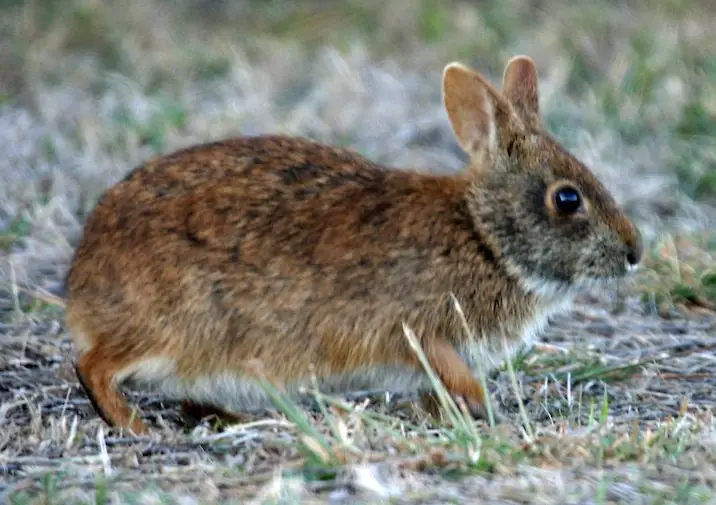
The marsh rabbit is a small cottontail rabbit that’s located in marshes and the swamps of the coastal areas of the Eastern and Southern parts of the United States. Compared to domesticated rabbits that are stressed in water, the marsh rabbit loves the water and is a strong swimmer. It looks like the eastern cottontail but has smaller tails, legs, and ears.
The name Sylvilagus palustris was from a combination of the words silva, which means forest and lagos, which means hare and palustris that means from the marshes. This rabbit is commonly associated with swamp rabbits, but the name must not be confused with larger swamp rabbits from Texas.
Marsh rabbits are smaller than eastern cottontails. Adults from Florida are as heavy as 2.6 pounds and can be as long as 17 inches. Adult marsh rabbits that are native from the mainland areas can grow larger, weighing up to 3.5 pounds and can be as long as 17.5 inches. The hind feet of an average mainland is larger compared to the specimen that’s found in Florida.
This rabbit has a black-brown or dark red dorsal area with a dingy brown-gray belly. Some mainland marsh rabbits have a dull white color. The ears have small black tufts of fur, and it has rough hair along its dorsal side.
In spring and summer months, the black areas on the upper body of the marsh rabbit change to a dull-gray buff. It will return to a dark-red color in the fall and then turn into a darker black in winter. Juvenile rabbits have darker and duller colors compared to adults.
Compared to other cottontails, the underside of the tail of the marsh rabbit is never white but is brownish gray. Species from southern Florida have a condition known as melanism, which means that these individuals have black phenotypic coloration, which does not change all year round.
Compared to swamp rabbits and cottontails, the marsh rabbit has shorter ears and legs. The tails are smaller than the bushy tails of cottontail rabbits.
Subspecies
There are three subspecies of the marsh rabbit:
- Carolina marsh rabbit (Sylvilagus palustris palustris) – found in mainland regions
- Florida marsh rabbit (Sylvilagus palustris paludicola) – small marsh rabbit found in the peninsular areas of Florida
- Lower Keys marsh rabbit (Sylvilagus palustris hefneri) – an endangered species of marsh rabbit
Range and Habitat
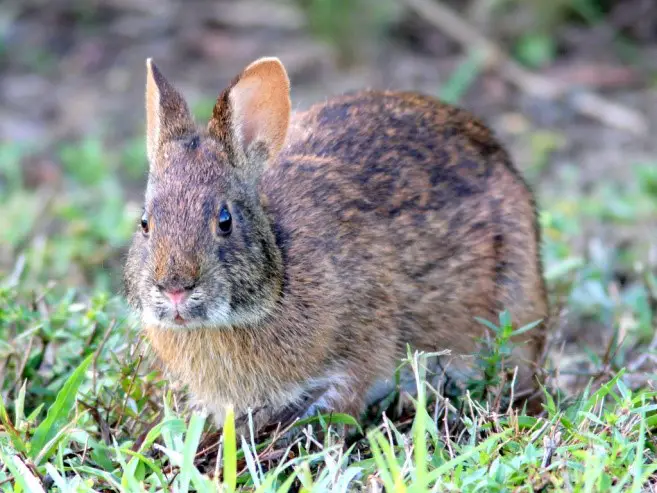
This species is a mainland marsh rabbit and can be seen from the Dismal Swamp in Virginia near the cost of the northern areas of Florida and into Mobile Bay in Alabama. It is found in coastal low-lying areas, rivers, swamps, and rivers and only a few miles from the coast.
The marsh rabbit is common in brackish and freshwater marshes with cattails and cypress along with the southern parts of Florida. They are found in sandy islands and along mangrove swamps. You’ll find these in areas where water is easily accessible compared to other rabbits. The marsh rabbits will enter the tidal marsh areas and will stay in the high ground in case its predators strike. This rabbit will utilize materials and plants nearby to create the perfect hiding spot. It can use thickets, magnolia, black gum, sweet plums, and cattails.
Fast Facts

The marsh rabbit will eat leaves, bulbs of cattails, grasses, and rushes and aquatic plants like greenbrier, centella, water hyacinth, marsh pennywort, wild potatoes, and amaryllis. Just like any other rabbit, the marsh rabbit will eat their droppings. They excrete soft and hard droppings, and the soft ones are quickly eaten to extract more nutrients.
Reproduction

Marsh Rabbits reproduce like any other rabbit species. They breed all year round and will have broods with 2 to 4 babies with a gestation period of 37 days. Females can produce 6 litters a year with an annual production of 20 babies. Females will construct nests out of rushes, leaves, and grasses. It will also line the nest with hair from their own bodies or from other adult rabbits. Well-built-nests are found in dense thickets or in swampy areas that are surrounded by water to protect the newborns.
In captivity, the female and male marsh rabbits can be forced bred to produce offspring. Females will make nests out of materials that are readily available in the cage-like hay and fur. She will also refuse to eat and drink and may not be interested in playing or socializing.
The female will soon give birth to three to five babies. Usually, a female will nurse her babies and clean them up but will soon leave her nest. The babies are born blind, deaf, and naked and very vulnerable to predators. The mother covers her nest before she leaves and will come back nightly to nurse them for only a few minutes. The little ones will open their eyes in 7 days and then wean from their mother in 12 days or earlier.
Personality and Behavior

Marsh rabbits are very active nocturnally and spend their daytimes inside their burrows. They also hide in dense thickets, tall grasses, and hollow logs. They may also hide inside abandoned burrows made by other animals.
This rabbit makes runway trials in thick vegetation near marshes. These trails can be easily identified as the rabbits mark them with their pee and droppings. This rabbit walks on all fours and places each foot down, alternatively similar to a cat. They can hop like any rabbit but are more agile when walking this sway.
Marsh rabbits love the water and may stay in or near the water than in forests. They are excellent swimmers, and to help them move quickly in water, their hind legs have less fur and may have longer nails than other cottontails. When it’s not in thickets, this rabbit can be submerged in muddy water with only their eyes and noses on the surface of the water. Their ears can lay flat. When a marsh rabbit is spotted in the water, they will quickly swim fast and go to a new hiding spot.
This rabbit breed has a sound similar to a pig’s squeal as they try to escape predators. The marsh rabbit is hunted as a sport and is also prey to many bigger animals. It is prey to the great horned owl and the marsh owl or the northern harrier. The marsh rabbit is also prey to the alligator, snake, foxes, bobcats, and coyotes.
Care of Marsh Rabbits
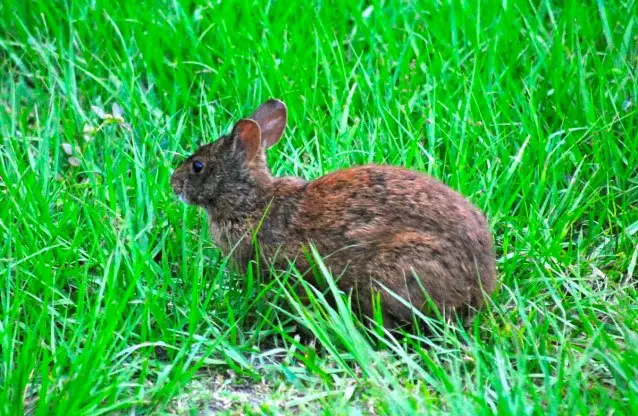
Before learning about how to care for a marsh rabbit, remember that this is not your average pet rabbit. This is a wild rabbit and thus needs special attention and care. It has unique food requirements, caging, and even training. So, don’t take a marsh rabbit from the wild to tame it and make it a pet. This rabbit will never become tamed. It may also have rabies, so don’t provoke or hold it unless it is used to your presence.
The only way to take care of a marsh rabbit is by raising one as a newborn. And if you happen to have a newborn marsh rabbit baby, then these tips and techniques apply to you.
Caring for a captive marsh rabbit breed is like caring for other rabbit breeds. Make sure that your pet has the right diet, housing or enclosure, proper medical treatment, and companions.
A very important part of a rabbit’s diet is hay. This is the bulk of a rabbit’s diet, around 70 to 80% of its diet, and aside from hay, you may also feed it pellets which is commercially-prepared food that has vitamins and minerals for your rabbit’s health. Feed it vegetables and fruits to their meals for a well-rounded diet.
Place fresh water and hay because this is a vital part of a rabbit’s diet because this is rough and can keep their digestion regular. You may place water in an inverted water bottle with a spout at the end. This is a good spill-proof way to drink water and won’t be in the way when your rabbit moves inside its cage.
Captive-bred marsh rabbits may be skittish and nervous before training, but after you have gained its trust, it can become calm and friendly. You must invest time to train it well. A way to do it is to interact constantly with your pet rabbit.
Take note that despite having wild parents, captive marsh rabbits are social animals and thus will need companions. Rabbits that grow up with constant companions and regular interactions with their owners are healthier and happier individuals.
Wild marsh rabbits are most active in the evening and sleep in the daytime. Therefore, feeding your pet marsh Rabbit should be done in the evening when they are active. Captive rabbits in the morning may forage for food in the evening when it’s cooler.
Supplies and Cages
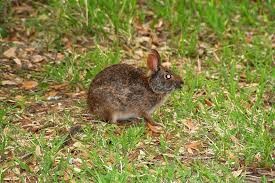
Despite their size, captive marsh rabbits are energetic and thus require a big enclosure where these can play, sleep, interact, and run. This enclosure should be made of wire and a very strong frame. The bottom must be removable, and this is where the rabbit’s droppings will fall. This pan makes it easier to dispose of the rabbit’s droppings. The floor must have soft bedding and lined with good quality bedding. Use hay, wood pellets, or horse bedding.
Since the rabbit needs more hay, place a rabbit hay feeder on the side of the enclosure. To clean the cage, use a safe and clean container, enclosure, or cage. Use only a safe cleaner or cleaning product such as white vinegar, baking soda, or lemon juice. Do not use household cleaners because could have dangerous ingredients that can negatively affect your rabbit’s health.
Use a separate or extra cage if you want to take care of baby marsh rabbits. Rabbits are born naked, deaf, and blind and thus are very vulnerable to cold and to predators. These should have a warm enclosure to keep their bodies at the best temperatures, so use a small cage with a cage lamp or lighting. A small heater will suffice to keep the baby rabbits dry, warm, and safe, especially during very cold weather.
And like other breeds, Marsh Rabbits will chew on anything it can see. If these rabbits are kept indoors, these will chew on anything made of wood and light materials and may also chew on electrical wiring. To avoid accidents, provide hay or chew toys inside the cage. Rabbit-proof your home’s interiors or exteriors before releasing your pet from its cage to avoid accidents.
Health Concerns
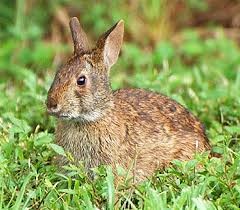
A marsh rabbit is a naturally healthy breed, and these are not affected by any disease. It is resilient and can withstand the elements. But the most common condition that this rabbit may be affected with is pests such as mites, ticks, and fleas. These pests are naturally found in their environment and thus may be harder to eradicate.
On the other hand, marsh rabbits are not immune to common diseases. You should always monitor your rabbit’s health and temperament since any kind of change could be due to a health condition or illness. So, as early as your pet opens its eyes and wean from its mother, take it to the vet for standard vaccinations and tests.
The vet will give your rabbit tests to assess the overall health of your pet. Take note that small and younger rabbits may have sensitive digestive systems and, therefore, may be affected with enteritis, bloat, and stasis. These conditions are prevalent to rabbits less than two months of age.
Also, take note of ear or fur parasites, and the most common are mites, fleas, and ticks. Rabbits that have these parasites usually have poor hygiene and are housed in dirty surroundings or enclosures.
Check your rabbit for any signs of illness like poor appetite, discharges from the eyes and nose, constipation, loose stools, and vomiting. Rabbits with unsteady gaits, restlessness, teeth grating and extended hours of sleeping may be suffering from a serious condition.
Another part of caring for marsh rabbits and other wild animals and pets is deworming. Your marsh rabbit must be treated for worms at least twice a year and must be done during springtime and fall. This is a major concern especially with rabbits that are from the wild or born from wild parents
You can use a deworming paste; a pea-sized amount will do. Place the medication inside the mouth or outside the mouth, and the rabbit will lick and swallow the medication till it’s gone. You should follow the dose depending on your vet’s prescription.
Dental Care
Just like domesticated rabbits, a marsh rabbit’s teeth will grow continuously. When left unchecked, this can grow to extreme lengths that it can pierce their mouth and gums. This can cause a lot of pain and discomfort. You must make sure that the rabbit’s teeth don’t overgrow to avoid stress. Help your rabbit by offering. This can grind the rabbit’s teeth naturally while the rabbit chews. You may place pieces of wood, baskets, or toys inside the rabbit’s cage to file your rabbit’s teeth.
Spaying or Neutering
You must control breeding by spaying or neutering your pets. Spaying and neutering should be done while your pets are still young. However, some vets prefer to wait until the rabbits are around six months old. Captive marsh rabbit bucks are also neutered because experts say that neutering can decrease the rabbit’s aggressive nature. Some vets prefer to neuter bucks at three months, which might be too early. So for any question about spaying and neutering, talk to your vet before the procedure and also for post-surgical care.
Grooming
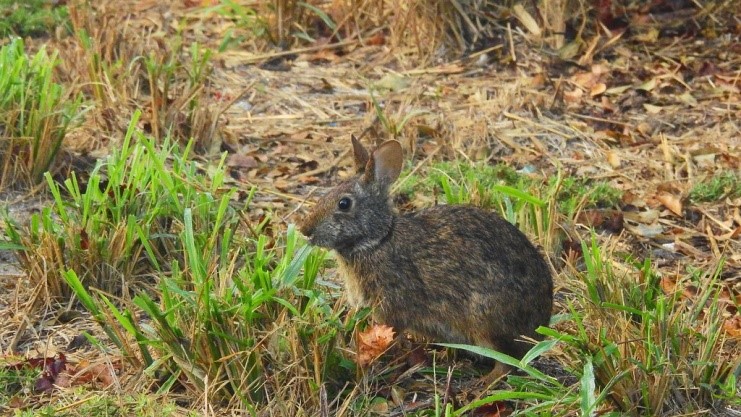
Marsh rabbits have short and rugged coats, but still, this requires regular grooming. This rabbit won’t mind being wet, so there’s no problem bathing it. Use a sturdy brush to keep the fur clean and free from common pests. Groom with a small brush at least once or twice a week to improve coat quality.
Grooming should be done more frequently during the molting period, which is a time when the rabbit sheds its old fur to for new fur. And to prevent wool blocks and to keep the rabbit from ingesting their fur, you can help by grooming it regularly.
Marsh rabbit ears and also need to be checked. If you don’t have the tools to cut its nails, visit a vet or a groomer.
Availability – Where to Get One?
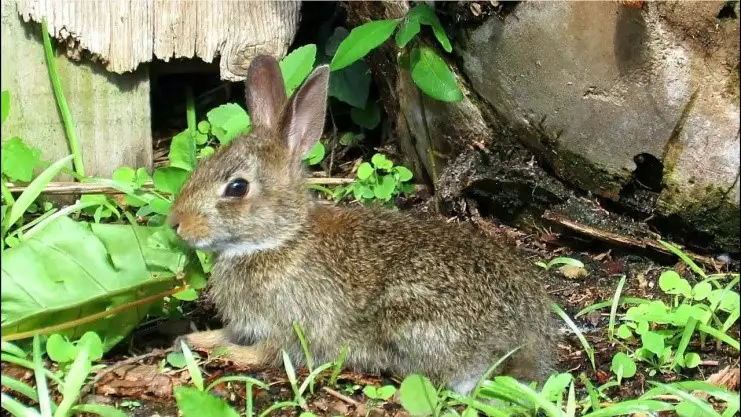
A marsh rabbit may be purchased from a breeder or a retailer that sells captive or domesticated pets. Never take a wild rabbit from the wild to take home as pets. You can expect the price of marsh rabbits to change depending on gender, size, coat quality, color, and appearance.
If you are searching for a good breeder, look for one that breeds healthy rabbits. Purchase your marsh rabbits from reliable breeders, or you can search for rabbits in local trade fairs and farm events. This is not a show breed, so the ARBA does not have shows or events that feature the marsh rabbit.
How to Care for a Marsh Rabbit
This is a summary of how to care for a marsh rabbit breed. Caring for a marsh rabbit is just like caring for other rabbits breeds. Remember the four basic components of captive or domesticated rabbit care: proper diet, housing, companionship, and professional medical care.
When it comes to the rabbit’s diet, the main food is hay because this can grind their ever-growing teeth, keep their digestive tract healthy, and maintain regular bowel movements. You may also provide a rabbit pellet with added nutrients, vegetables, and fruits for a healthy and well-rounded diet. You may also feed food in their natural habitats like marshes, grasses, twigs, seeds, roots, and weeds, to name a few.
No matter what happens, keep water inside the rabbit’s cage. Keep water in a large, heavy, and shallow dish so that your rabbit can drink without spilling.
Marsh rabbits can only become a calm, friendly, and docile pet when you take time to train and bond with the rabbit. You must train and interact with your pet regularly. Captive rabbits are social animals and will need a rabbit companion or companions.
Take note that your rabbit can grow healthy, and have a good temperament with a docile behavior when it socializes with you and his companions. And finally, take your pet to the vet early for vaccinations and tests. It should have a clean bill of health before it is allowed to remain with other rabbits, pets, and also with you and your family. You must understand the different signs of illness in your pets, as well.
FAQs
Are Marsh Rabbits endangered?
No, Marsh Rabbits are not endangered. Marsh Rabbits are wild rabbits and have a large population in the wild. But this species may still be vulnerable to the effects of logging and other environmental changes and hence may soon experience a decrease in the population if these threats are not controlled.
Can Marsh Rabbits swim?
Yes, Marsh Rabbits can swim very well, and in fact, this is one way for the rabbit to dodge threats. It can dive into the water and just remain there motionless with just its nose and eyes on the water surface. When it is spotted, it can quickly move and run away to safety.
How do you tame a rabbit?
A wild rabbit cannot be tamed because you might get bitten and hurt. You may train a captive-bred rabbit instead because these rabbits have a docile behavior and are friendlier than their wild counterparts.
Will Marsh Rabbits eat fruits and vegetables?
Yes, Marsh Rabbits can eat fruits and vegetables as well as other plant parts. In captivity, it can eat commercially-prepared pellets or rabbit food which contain nutrients for your pet’s good health.
What do Marsh Rabbits eat?
Marsh Rabbits are herbivorous, and it will eat plants. These will eat all parts of the plant like roots, bark, seeds, weeds, flowers, and leaves. If it is kept in captivity, it can eat commercially-prepared rabbit food, vegetables, seeds, nuts, and fruits, but you may also provide food coming from its natural environment.
Should you get a wild rabbit from the forest?
Don’t just get a wild animal such as a rabbit from the forest. This kind of rabbit is hard to tame, and you can’t make it your pet because it will remain a wild creature. If you see an injured rabbit, you may call animal services for assistance right away.
Will Marsh Rabbits eat their droppings?
Yes, like all rabbit breeds, the Marsh Rabbit will eat its poop because these still have nutrients in them. But after eating the poop once, they won’t do it the second time. You can prevent this by removing their droppings as soon as possible.
Can you keep a Marsh Rabbit as a pet?
No, you can’t keep the Marsh Rabbit as a pet because it is a wild animal. But if you want to care for a marsh rabbit, you can try volunteering at a local zoo or animal shelter.
How do you clean a Marsh Rabbit’s cage?
To begin, remove the rabbit inside the cage and place it in a clean cage. Clean the pan under the cage and dispose of the droppings properly. Hose the cage and use a brush and cleaning product to clean and scrub the cage walls, floor, accessories, and toys. Replace the cage bedding and ensure that everything is dry before putting your pet back in its cage.
Where do Marsh Rabbits live?
Marsh Rabbits are found in the wild. These live in marshes and in burrows that are a few meters deep. Marsh rabbits also spend time near and in the water, mostly searching for food and hiding from predators as well.
How do you take care of baby Marsh Rabbits?
If you want to take care of baby Marsh Rabbits, place the babies in a comfortable and warm cage. Protect from predators such as a house cat or pet dog. For wild-caught bunnies, don’t move them and call animal services to have these rescued right away.
Are Marsh Rabbits carnivorous?
No, these rabbits are not carnivorous despite being wild. These are herbivores, which means that these won’t eat meat and will only consume plants or plant parts such as roots, bark, leaves, flowers, twigs, stems, seeds, and more.
Can you keep two or more Marsh Rabbits in one cage?
You can keep two or more rabbits in one cage as long as the enclosure is large. The cage should be large, comfortable, and safe so that your rabbits can remain safe and comfortable despite being in captivity.
Will a mother Marsh Rabbit eat her young?
There are rabbits that can eat their young. So, if you spot a female Marsh Rabbit eating her young, remove it from the nest and don’t allow this female to breed anymore.
Where do you put a Marsh Rabbit’s cage? Indoors or outdoors?
Whether you place the cage Indoors or outdoors, consider the pros and cons. You may place the cage indoors to protect it from the rain, sunlight, and the cold, but your pet will have a small space to play and may not be enough to house an adult Marsh Rabbit. When you place your cage outdoors, the rabbits may need to deal with the elements, but these will have a large area to play and run.
Can you leave a rabbit indoors?
You may let a rabbit indoors but only under your supervision. Use a portable fence to keep it from areas that you don’t want it to go. Don’t forget to rabbit-proof your home before you release your pets from their cage.
Are Marsh Rabbits territorial?
Marsh Rabbits are also like other rabbits that may become territorial when these are in a small enclosure. Males can have aggressive behavior and may become dangerous to other males during the breeding season. The aggressive males can hurt other males inside the cage to fight for hierarchy.
Do you need cage a heater inside a Marsh Rabbit’s enclosure?
Instead of a heater, you may use a cage lamp to provide heat. But in cold weather, you may use a small portable heater. Place this near the cage to make a warm and comfortable place for your pets. This can also be your setup if you are incubating baby rabbits.
Does it hurt when a Marsh Rabbit scratches you?
Yes, this may hurt because Marsh Rabbits have sharp claws on its hind feet. This rabbit can kick with its hind feet, which can cause a lot of damage. Marsh Rabbits will do this when it feels threatened or afraid, so if you handle it well, then it will not scratch or hurt you.
How large should a Marsh Rabbit’s cage be?
One Marsh Rabbit must be placed in a large enclosure because of its size and level of activity. For two large rabbits, double this size. You must never overlook the cage size and make sure that your rabbits have space to play, run, and socialize inside their cage.
Can you prevent a Marsh Rabbit from eating his poop?
You can stop a Marsh Rabbit from eating his poop by removing the droppings after these defecate, but of course, you can’t watch your pets all day just to check if it has defecated! And no matter what happens, these animals will still eat their dropping because they know it still has nutrients. But the second time, your rabbit won’t eat its poop/
What happens when the teeth of a rabbit become longer?
When the teeth of the rabbit become longer, these can pierce its mouth and gums, and this can lead to a lot of pain and may also affect its appetite. This is the main reason why you must take your rabbit to the vet and dentist regularly. You may also help it by feeding it hay since hay can naturally grind their teeth short as the animal chews away.
How often do visit the vet?
Rabbits should visit the vet at least twice a year. Young rabbits must also be vaccinated against rabbit diseases as early as possible. These should have an initial visit to a vet when they are just a few weeks old. You must also visit the vet for any medical condition as well as a medical emergency.
Can rabbit diseases affect humans?
Some rabbit diseases may affect only rabbits, while some can also affect humans. So, if your rabbit is sick, take it to the vet ASAP. You must also learn the different signs of illnesses such as lack of appetite, loose stools, constipation, sneezing, breathing problems, and changes in behavior. Take your pet to the vet as soon as you notice these signs.
Are Marsh Rabbits bites dangerous to humans?
Yes, Marsh Rabbit bites are dangerous because the rabbit may have rabies. Also, rabbit teeth may be large and sharp, and this can easily tear off skin and flesh, which can lead to a deep and infected wound.
Will Marsh Rabbits know their owners?
Some rabbit owners say that their pets can recognize them and can tell if they are handled by their owners or by a stranger or someone else. They may even act skittish and refuse to be held by strangers.
Can rabbits tolerate the cold climate?
Yes, rabbits can remain in the cold outdoors and survive by searching for food that’s under the snow. Rabbits will use their legs to dig out snow and eat plant parts like roots, shrubs, berries, and other food that they can find.
Can Marsh Rabbits stay outdoors?
A pet Marsh Rabbit may remain outdoors, but you must rabbit-proof your yard or outdoor before you release it. A portable perimeter fencing is a good way to limit the area where the rabbit can remain free. Dig deep and burry the fence poles to prevent the rabbit from digging this out and escaping.
Can Marsh Rabbits escape their enclosures?
Yes, Marsh Rabbits may be able to escape their cages by kicking these down. These can also jump and escape, but will also dig around the cage to escape.
Do Marsh Rabbits have good hearing?
The Marsh Rabbit has good hearing. It can hear its predators even from afar, and this gives it time to escape the threat.
Can rabbits see in the dark?
Yes, rabbits have good vision, especially at night. This is why some species would like to forage for food at night. Rabbits such as the Marsh Rabbit also have a good sense of smell and hearing, which allows them to feel for predators near their area.
Can you train your rabbit to wear a collar and leash?
Some pet owners are able to train their pet rabbits to wear a collar and a leash, but some pet owners say that this could depend on what breed of rabbit you are training.
Where do rabbits sleep in the wild?
In the wild, rabbits can sleep in burrows that they have made called warren. Rabbits can dig deep holes into remaining inside all day and sleeping in their dens and nests, as well. In captivity, they are forced to live in an enclosure that can accommodate a group of rabbits. This cage is safe and secure from any predator.
Can rabbits handle young children?
Some rabbits will not want to be held by young children; however, some are calm, docile, and friendly and will tolerate being held and petted by young children.
Will your pet rabbit tolerate the cold?
Some pet rabbits can deal with the cold and will have fun in the snow. Some rabbits can change their coat color to adapt to the cold climate while some may not survive the cold like desert breeds.
How many rabbits are you allowed to keep as a pet?
You can keep three, four, or more rabbits as a pet as long as you have a large cage. This is to keep these animals comfortable and happy. Keeping only one rabbit will make it lonely, and this can affect its health.
Will rabbits eat insects?
No, rabbits will never eat insects. This is a herbivore and will eat only plant and plant parts, rabbit pellets, fruits, and vegetables. And when you feed your rabbit produce, make sure that these are organic to protect your rabbit from pesticides, toxins, and chemicals.
Can you place the cage of Marsh Rabbits near other breeds?
A Marsh Rabbit may not do well with other animals or rabbit breeds because of their wild nature. Therefore, you must place its cage away from them.
What do you do with abandoned rabbits?
If wild baby rabbits are abandoned in their nests, call animal service as soon as you can. You should never get baby rabbits from the wild even if they are just near because these may have rabies.
Are rabbits cannibals?
Eating their young can be seen in some female rabbits, and experts say that this is because the female is famished or thirsty after giving birth, and there is no food or fluids inside the cage. Some say that rabbits do this to remove any tissue, blood, and smell in the nest to protect their kittens when a baby is stillborn.
How young do you spay or neuter a rabbit?
The age to spay or neuter may depend on the vet, but some bucks are neutered at 3 months. However, some vets will wait until these are 5 to 6 months before the procedure.

